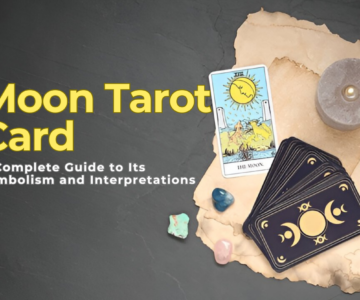 How to Share a YouTube Video on Instagram: A Complete Step-by-Step Guideby admin / April 9, 2025
How to Share a YouTube Video on Instagram: A Complete Step-by-Step Guideby admin / April 9, 2025How to Make Perfume at Home: A Complete DIY Guide
Have you ever wanted to craft your own signature scent? With the right ingredients and a little creativity, you can make perfume at home that’s both personal and natural. Whether you’re looking to reduce your exposure to synthetic chemicals or just want a unique aroma tailored to your preferences, making perfume at home is a rewarding and fun experience.
In this comprehensive guide, we’ll walk you through everything you need to know about making your own homemade perfume—from understanding scent notes to step-by-step instructions.
Why Make Perfume at Home?
Creating perfume at home offers many benefits:
-
Natural ingredients: No harsh chemicals or artificial fragrances.
-
Custom scents: Mix essential oils to suit your mood or style.
-
Cost-effective: Store-bought perfumes can be expensive; DIY perfumes are budget-friendly.
-
Sustainable: Homemade perfume reduces plastic and packaging waste.
Ingredients Needed to Make Perfume at Home
To begin, gather these basic ingredients:
1. Essential Oils
Essential oils form the base of any DIY perfume. Choose oils based on the scent profile you want:
-
Top notes: Citrus (lemon, orange, bergamot), mint, lavender
-
Middle notes: Rose, jasmine, ylang-ylang, geranium
-
Base notes: Vanilla, sandalwood, patchouli, cedarwood
A good blend usually includes all three to create a well-rounded fragrance.
2. Carrier Oil or Alcohol
You’ll need a base to dilute the essential oils:
-
Jojoba oil or sweet almond oil: Ideal for oil-based perfumes
-
Vodka or perfumer’s alcohol: Perfect for sprayable, alcohol-based perfumes
3. Distilled Water (Optional)
Used to slightly dilute the perfume and make the aroma lighter.
4. Glycerin (Optional)
A few drops of glycerin can help your perfume last longer on the skin.
5. Dark Glass Bottle
Use a dark glass bottle with a spray nozzle or roller top to store your perfume. The dark glass helps preserve the scent.
Tools You’ll Need
-
Glass droppers or pipettes
-
Small glass beaker or mixing bowl
-
Stirring stick or spoon
-
Labels and pen for tracking formulas
Step-by-Step Guide to Make Perfume at Home
Step 1: Choose Your Scent Combination
Decide on a scent theme—floral, spicy, citrusy, earthy, etc. Then select essential oils that complement each other.
Example blend:
-
Top note: 5 drops of bergamot
-
Middle note: 10 drops of lavender
-
Base note: 5 drops of sandalwood
This balanced ratio gives depth and lasting power to your perfume.
Step 2: Mix the Essential Oils
In a small beaker or bottle, add your essential oils starting from the base notes, followed by middle, and then top notes. Swirl gently to combine.
Step 3: Add Alcohol or Carrier Oil
Add about 2 tablespoons of alcohol (if using) to the essential oil blend. If you’re making an oil-based perfume, add 2 tablespoons of carrier oil instead.
Mix thoroughly.
Step 4: Let It Mature
Seal the container and store it in a cool, dark place for at least 48 hours to 4 weeks. The longer it sits, the more the scents will blend and mature.
Step 5: Add Distilled Water (Optional)
If you prefer a lighter scent, you can add 1–2 teaspoons of distilled water after the aging process.
Step 6: Strain and Bottle
Strain the mixture using a coffee filter or cheesecloth to remove any sediment. Transfer your finished perfume into a dark glass spray bottle.
Label your creation with the date and name!
Tips for Making the Best Perfume at Home
-
Use high-quality essential oils for the best results.
-
Test on your skin to see how the scent interacts with your body chemistry.
-
Write down your recipe so you can recreate or tweak it later.
-
Store in a cool, dark place to maintain fragrance quality.
-
Start small—experiment with small batches before scaling up.
Different Types of Perfumes You Can Make at Home
1. Roll-on Oil Perfume
Perfect for travel or a quick touch-up. Made using carrier oils and essential oils.
2. Spray Perfume
Light and refreshing. Made with alcohol, essential oils, and a splash of distilled water.
3. Solid Perfume
Great for purses and pockets. Mix essential oils with beeswax and a carrier oil.
Popular Essential Oil Blends for Homemade Perfume
Here are some beginner-friendly blends to inspire your creativity:
Floral Fantasy
-
10 drops rose
-
5 drops lavender
-
5 drops sandalwood
Citrus Burst
-
8 drops orange
-
5 drops lemon
-
3 drops bergamot
-
4 drops cedarwood
Earthy Spice
-
6 drops patchouli
-
4 drops clove
-
5 drops vanilla
-
3 drops vetiver
FAQs About Making Perfume at Home
Is it safe to make perfume at home?
Yes, as long as you use skin-safe essential oils and test the blend on a small patch of skin before full use.
How long does homemade perfume last?
When stored properly, a perfume made at home can last up to 6–12 months.
Can I make perfume without alcohol?
Absolutely! Use a carrier oil like jojoba oil for an alcohol-free version.
Final Thoughts: Craft Your Signature Scent
Making perfume at home is an enjoyable, eco-friendly, and creative process. It allows you to express your personality through scent and avoid synthetic chemicals found in store-bought perfumes. With just a few ingredients and a little patience, you can create beautiful fragrances that are uniquely yours.
So, why wait? Head to your local natural store, grab your favorite essential oils, and start making your custom perfume at home today!


